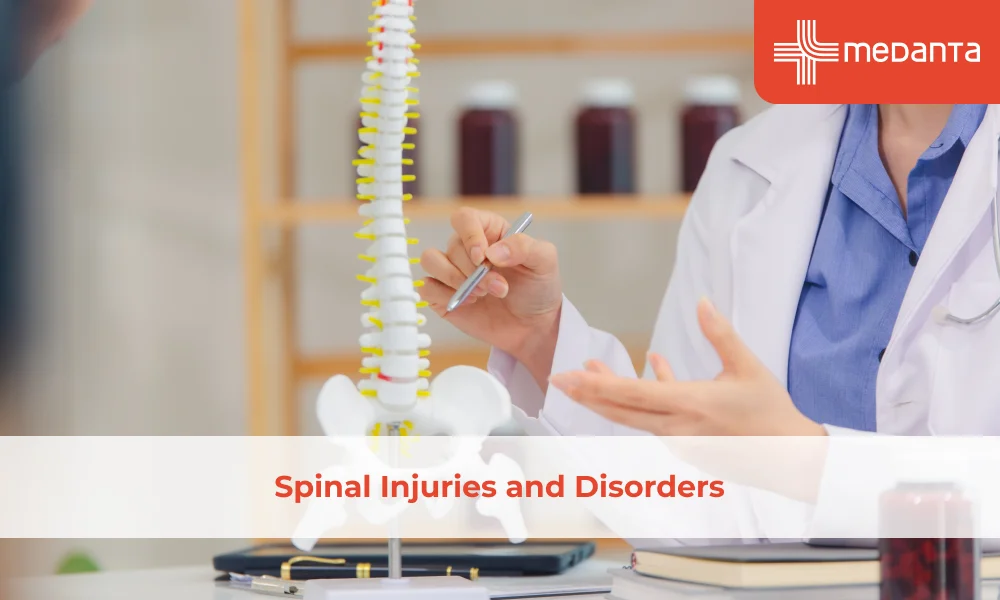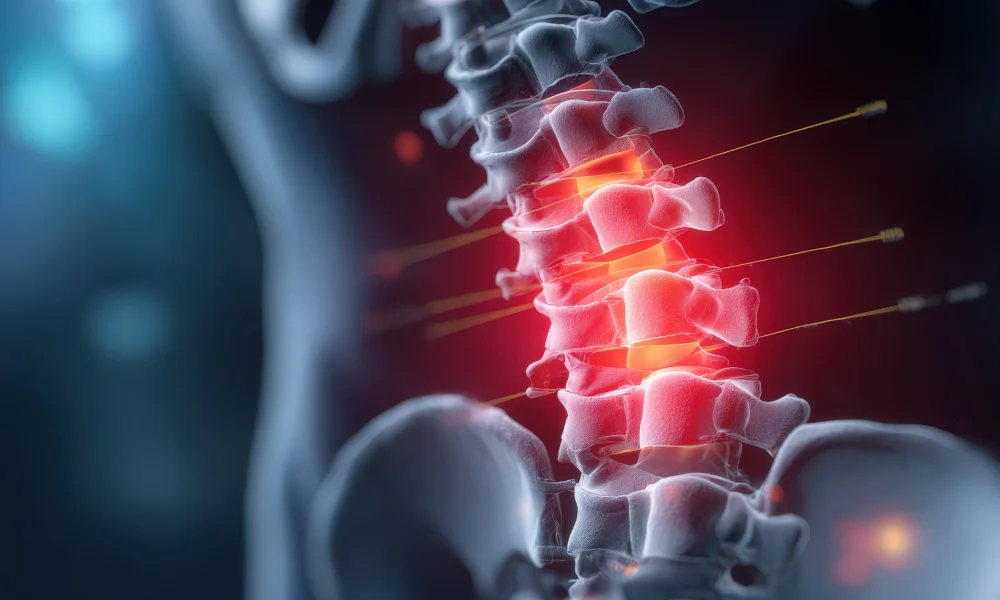Spinal Injuries and Disorders

TABLE OF CONTENTS
A spinal cord injury can be caused by traumatic or non-traumatic incidents. According to the WHO, about 500,000 people worldwide suffer from spinal cord injuries each year, most of which are due to preventable causes like car accidents, falls, and acts of violence. There are another set of non-traumatic causes of spinal injury that can arise due to medical illnesses like diabetes, autoimmune disorders, and nutritional deficiencies.
Although numerous treatments and rehabilitation programmes allow people with spinal cord injuries to lead productive lives, spinal injuries come with substantial individual and societal costs. Learn about the implications of spinal cord injuries, their causes, and treatment in the sections below.
Spinal Cord Injuries and Disorders
In the human body, the spinal cord acts as the principal communication channel that transfers messages between the brain and the rest of the body. Its structure resembles a tube consisting of a bundle of nerves that go from the base of the brain down the back and is located within the vertebrae. The spinal cord is divided into four sections: cervical, lumbar, thoracic, and sacral, any of which can be affected by a spinal cord disorder.
The spinal cord also consists of spinal nerves having two nerve roots- motor and sensory. While the motor roots carry messages from the spinal cord to the muscles to stimulate movement, the sensory roots transfer signals of sensations like touch and pain from the body to the spinal cord. A loss of sensation in any part of the body can therefore also be considered a spinal cord disorder.

Types of spinal cord injuries
Essentially, there are two types of spinal cord injuries: complete and incomplete (partial). While a complete spinal cord injury causes total paralysis below the level of the injury, a partial or incomplete spinal injury may leave the patient with some sensation and control over the afflicted areas.
Based on location, spinal cord injury types are
Cervical spinal injury: It is the most severe type of spinal cord damage, affecting the top region of the spine, including the vertebrae of the neck.
Thoracic spinal injury: It affects the upper and middle sections of the spine and impacts the muscles in the belly, legs, and lower back.
Lumbar spinal injury: It occurs when the lower main section of the spinal cord is injured. Patients may lose some control of their hips and legs, but their upper body is usually functional.
Sacral spinal injury: An injury to the sacral spine can result in some loss of function in the hips and legs. It could also affect bladder and bowel control.
Symptoms of Spinal Cord injury
The symptoms vary from individual to individual depending on the type, location, and severity of the injury. Some common symptoms of a spinal cord disorder are:
significant pain in the head, neck, or back
inability or weakness to walk
breathing problems
balance and coordination problems
tingling or numbness in the extremities
loss of bladder and bowel control
Since spinal cord injuries have serious implications, it is crucial to see a trained spine surgeon as soon as these symptoms appear.
Causes of a Spinal Cord Disorder
The most common causes of spinal cord injuries and disorders are:
Motor vehicle accidents
Falls or collisions (especially among older people)
Violent acts (like gunshot and knife wounds)
Sports and recreation injuries
Cancer
Arthritis
Osteoporosis
Inflammation of the spinal cord
Injuries to the spine or its connective tissues, like discs and ligaments, can also harm the spinal cord. Such injuries include fractures, dislocations of adjacent vertebrae, partial misalignment of adjacent vertebrae, and loosened ligament attachments.
Damage from inside the spinal cord can be caused by several disorders, such as fluid-filled cavities, blockage of blood supply, vitamin deficiency, autoimmune diseases, multiple sclerosis, and syphilis.
Complications
Some lifelong complications arising from spinal cord injuries are:
Loss of bladder control: People with spinal cord injuries often complain of losing bladder and bowel control prompting them to empty their stomachs frequently.
Loss of muscle tone: If a person is unable to move and use their arms or legs, the muscles may shrink and weaken.
Muscle spasms: Spinal injuries can cause muscle spasms, resulting in uncontrollable movements.
Nerve pain: Most people with spinal cord injuries experience chronic nerve pain in different parts of the body.
Skin sores: If a person loses sensation in certain parts of their body, they may be unaware of any sores, cuts, or burns and thus acquire infections and other issues.
Lung issues: If a person can't cough or breathe well after a spinal cord injury, they may be unable to clean their lungs properly, increasing their risk of pneumonia.
Blood clots and swelling: Patients with low blood pressure are more likely to develop blood clots and swelling.
Stroke and cardiac arrest: Some spinal cord injuries can result in dangerously high blood pressure, leading to seizures, heart attacks, and stroke.
Infertility: Women may have difficulty getting pregnant, and these injuries can sometimes prevent ejaculation in males.
Obesity: If a person can no longer walk or move as freely as they used to, they may adopt a sedentary lifestyle, which can cause weight gain or obesity, increasing their likelihood of developing ailments like diabetes and heart disease.
Treatment of Spinal Cord Disorder
Since a spinal cord disorder can have long-term consequences, it is critical to get diagnosed by a spinal surgeon as soon as possible. Spinal disorder treatment depends on the type, location, and severity of the condition. It may include physical or occupational therapy, activity modification, surgery and medications. At Medanta, some of India’s top spinal surgeons, with their specialised teams of nurses, physiotherapists, and occupational therapists, ensure that patients receive excellent care throughout their treatment. Visit their Institute of Musculoskeletal Disorders and Orthopaedics for more information related to spinal injuries and disorders.






